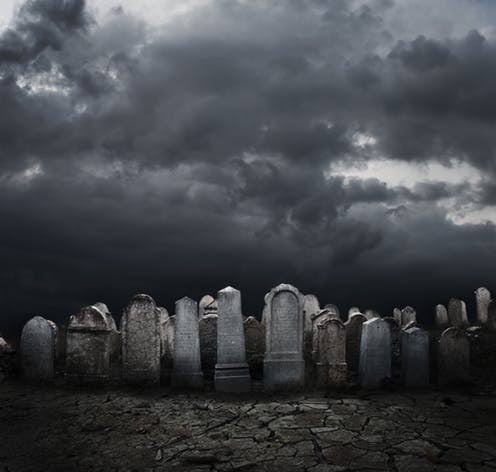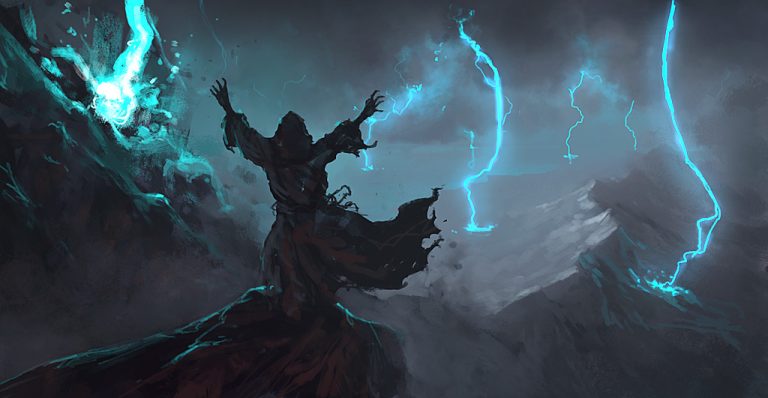Indian Muslims Are Punished For Asking To Be Indian
On February 24, Hindu nationalist mobs descended on the northeastern parts of India’s capital, New Delhi, and wreaked…
On February 24, Hindu nationalist mobs descended on the northeastern parts of India’s capital, New Delhi, and wreaked havoc for four days, targeting Muslim businesses and homes. More than 50 people were killed and hundreds were injured in the violence.
In the aftermath of the attacks, I visited one of the worst-affected neighbourhoods, Shiv Vihar, and witnessed the destruction. While Hindu shops and residences looked largely intact, most Muslim houses and businesses were gutted down to their bare bones. The burnt remains of the possessions of Muslim families – fridges, TV sets and cars – were scattered across the neighbourhood’s narrow lanes.
While one local mosque was charred to the ground, another named Auliya looked largely unaffected from the outside. But inside, I found that it, too, was a charred, mangled mess. Hindu residents seemed to be carrying on with their lives as normal, but Muslims were nowhere to be seen – they had all left, seeking safety in relief camps set up by the government.
The unrest that left Shiv Vihar in ruins was triggered after the weeks-long sit-ins in Delhi against the new Citizenship Amendment Act (CAA), which opponents say discriminates against Muslims, who were attacked by Hindu nationalists.
Anti-CAA protests in Delhi had been peaceful from the beginning. People got together to sing patriotic songs, wave Indian flags, recite from the Indian constitution and listen to speeches on freedom, solidarity and secularism. The protesters – many of them women – demonstrated nothing but loyalty to their country, but this did not stop the ruling Bharatiya Janata Party (BJP) from portraying them as “traitors” and making them prime targets for vigilante attacks.
In the run-up to the February 7 Delhi assembly elections, for example, the BJP ran a vicious campaign targeting the city’s Muslims. Anurag Thakur, the junior finance minister, incited the crowd at an election rally to shout “shoot the traitors“. Another minister, Parvesh Verma, swore the protesters would be “sent packing” within hours of a BJP victory, adding that if left unchecked, they would “rape and kill”.
Prime Minister Narendra Modi and Minister of Home Affairs Amit Shah, meanwhile, implied the protesters were anti-India and pro-Pakistan.
Modi termed the ongoing protests a “conspiracy” designed to undermine “India’s harmony”. Shah claimed protesters had raised slogans like “Jinnah wali azaadi (We want Jinnah-style independence)”, suggesting they demand the disintegration of India.
When the inevitable happened and the protesters were attacked, the violence quickly spread across Delhi. The authorities did little to ease the tensions, while the police faced accusations of looking the other way.
Many observers compared the attacks in Delhi to previous episodes of communal violence. Indeed, India’s post-independence history is bristling with such incidents.
This most recent episode was neither the biggest nor the most violent in India’s recent history. Yet, for careful India watchers, what happened last month was in a different category.
To understand what makes these attacks unique and therefore more frightening, let us recall two other episodes of intercommunal violence in India’s recent history: the 1984 massacres of Sikhs in Delhi and the 2002 pogroms targeting Muslims in the state of Gujarat.
The roots of the anti-Sikh violence of 1984 can be traced back to a separatist armed uprising that formed in the state of Punjab in the mid-1970s. As the movement grew in power, fighters started staging violent attacks in Delhi and other northern cities. In 1983, the leader of the movement, Jarnail Singh Bhindranwale, and some of his most prominent followers took refuge in the Golden Temple, the holiest of Sikh shrines located in Amritsar in Punjab, to escape arrest.
In June 1984, then-Prime Minister Indira Gandhi ordered the Indian military to flush out the Sikh fighters from the temple. More than 500 people were killed during the operation, including many Sikh civilians.
Then on October 31, 1984, two Sikh guards assassinated Gandhi at her residence in New Delhi in retaliation. Her assassination set off a fury: at the end of three days of non-stop butchery, 2,800 Sikhs were dead.
The 2002 Gujarat pogroms followed a similar scenario.
On February 27, 2002, a blaze in a train carrying Hindu pilgrims killed 59 people in Godhra, Gujarat. The passengers were Hindu pilgrims, returning from Ayodhya after a religious ceremony at the site of the Babri Mosque. The mosque was demolished 10 years earlier by Hindu mobs claiming it was built on the ruins of a temple dedicated to Ram, a major deity of Hinduism.
One official enquiry concluded that the fire in the train was accidental, caused by someone cooking or smoking inside a coach, but this report was later dismissed by the Supreme Court as “invalid”. The Indian authorities eventually concluded that the train was set ablaze by Muslims. The incident caused an explosion of rage in the Hindu community and led to the killing of more than 1,000 people, most of them Muslims.
The 1984 massacres of Sikhs and the 2002 pogroms against Muslims in Gujarat had a lot in common.
In both cases, the police were accused of abandoning their supervisory duties, by either remaining passive or, in some cases, aiding and abetting the killings.
Both instances were also marked by acts of extreme violence previously unseen in communal clashes in India.
In 1984, Sikh men and boys were fitted with burning tyres around their necks so that their deaths would be slow and painful. Sikh women, on the other hand, were repeatedly raped and forced to watch their husbands and sons die.
In 2002 in Gujarat, many men and boys were dismembered and burned. Ehsan Jafri, a former member of Parliament, for example, was hacked to pieces and burned despite repeatedly seeking help from people he knew in the state government.
Another important similarity between these two horrific episodes of violence was accusations of government complicity.
In 1984, local Congress leaders in Delhi were accused of aiding and abetting rioters, while the central government faced accusations of turning a blind eye to the violence. In 2014, a fact-finding team jointly organised by two prominent civil society organisations, the People’s Union for Democratic Rights and the People’s Union for Civil Liberties, found that the attacks on members of the Sikh Community in Delhi and its suburbs “were the outcome of a well-organised plan marked by acts of both deliberate commission and omission by important politicians of the Congress”. Four years later, Sajjan Kumar, who was a prominent MP at the time of the riots, was sentenced to life in prison for “inciting crowds to kill Sikhs”.
In Gujarat, similar accusations were directed at the state’s BJP government. Modi, the then Chief Minister of Gujarat, was accused of failing to halt the violence and indirectly encouraging some of the Hindu rioters. During its deliberations on the Gujarat riots, India’s Supreme Court even likened Modi’s government to that of Nero, the Roman emperor who fiddled while Rome burned. In 2012, Modi was cleared of complicity in the violence by a Special Investigation Team appointed by the Supreme Court, but rights groups continue to accuse him of tacitly supporting the rioters.
Last month’s anti-Muslim attacks in Delhi had all of these characteristics.
There is, however, one aspect that sets the events of last month apart from the historic cases of communal violence.
Both the Sikh massacres and the Gujarat pogroms started in response to alleged atrocities committed by the members of the targeted communities. Last month’s anti-Muslim violence in Delhi, however, was not “revenge” for anything. It was not preceded by a major infraction against the Hindu majority. The Muslim community did nothing that could even remotely warrant retaliation. The only thing they had done in the weeks prior to the attacks was to peacefully protest against the country’s new, discriminatory citizenship law. Thus, unlike in 1984 and 2002, there was no ostensible cause for the violence.
This time, Muslims were punished, only for being Muslim and asking to be Indian.
And because of this, last month’s attacks mark the beginning of a new, frightening chapter in Indian history. The Hindu mobs, empowered by the Hindu-nationalist central government, no longer appear to need a reason to attack minorities.
This signals that for minority communities in India, the future is now darker and more frightening than it has ever been before.
Written by Vidya Subrahmaniam
Vidya Subrahmaniam is an award-winning Indian journalist and political commentator.




